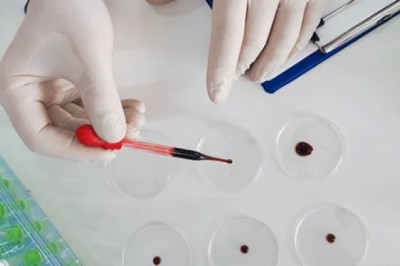views
The U.S. Drug Enforcement Administration (DEA) announced on May 10, 2022, the first-ever National Fentanyl Awareness Day. Many of the largest tech and health companies globally joined to support this effort, including Google, Meta, Twitter, and many others. While the opioid epidemic is a familiar problem, fentanyl has gained international attention at an unprecedented rate. Here’s how fentanyl has made the opioid epidemic more deadly than ever.
What Is Fentanyl?
Among the statistics provided on the National Fentanyl Awareness Day website, here are some of the most alarming ones:
● Fentanyl is involved in more U.S. youth drug deaths than heroin, meth, cocaine, benzodiazepines (benzos), and prescription medications combined.
● Forty percent (40%) of the pills law enforcement authorities seize contain a lethal amount of fentanyl.
● Fentanyl is the leading cause of death for all Americans under 50 years old.
No doubt, these statistics are scary to think about, especially because they show how widespread the fentanyl problem is. However, this drug wasn’t so widely known all that long ago, so you might be wondering what fentanyl is and how it became such a deadly drug. Fentanyl is a narcotic opioid normally prescribed for pain management associated with severe cases like nerve damage and cancer treatment. Unlike other opioids, such as morphine and heroin synthesized from the poppy plant, fentanyl is entirely synthetic or human-made. But this is not the only way that fentanyl differs from other opioids. By comparison, fentanyl is 80 to 100 times more potent than morphine, and it is regularly disguised as heroin so that it can be sold on the street as a highly potent form of heroin. Because of this, fentanyl is used as a catalyst in virtually every kind of opioid drug addiction, either by sellers lacing other drugs with it or users abusing any opioids they can get their hands on to curb their addictions.
A New Era of the Epidemic
This opioid epidemic shares traits with the OxyContin craze of the 1990s. When that drug hit the market and set off a chain reaction of abuse, it also helped create a resurgence of heroin use. That era of the opioid epidemic was marked by widespread addiction, fraudulent prescriptions, street dealers, and infamous court cases. The situation created back then was very dangerous, but with fentanyl, the situation has turned deadly. It only takes about 2mg to 3mg of fentanyl to kill the average person, which means intentional and unintentional fentanyl use is lethal.
While there are plenty of examples of fentanyl pills hitting the drug market for street use, most users are entirely unaware that they have taken the drug. Unfortunately, this means they cannot receive life-saving medical treatment from opioid reversal drugs like naloxone until it’s too late. On the other hand, some people deliberately seek out fentanyl because of how potent and addictive the drug is. For them, the euphoria the drug gives is so strong that it outweighs the drug’s risks.
One Way to Beat the Statistics
While this approach may have worked with other opioids, fentanyl’s deadly nature makes this approach a ticking time bomb. When it comes to ongoing fentanyl use, it’s only a matter of time before users take a lethal amount of the drug. If fentanyl death rates are any indication, death is becoming the norm of fentanyl use, not the exception. If you or anyone you know is taking illicit street drugs of any kind, seek professional medical help immediately. While the U.S. Centers for Disease Control & Prevention (CDC) recommends carrying naloxone to save the lives of those who have overdosed on fentanyl and other opioids, not using drugs at all is the only way to protect yourself from fentanyl’s deadly effects. The drug is hiding here, there, and everywhere, sometimes in plain sight.
Sources
Fentanyl Awareness Day. (n.d.). National Fentanyl Awareness Day. Retrieved https://www.fentanylawarenessday.org/?ACSTrackingID=USCDC_1026-DM81606&ACSTrackingLabel=National%20Fentanyl%20Awareness%20Day&deliveryName=USCDC_1026-DM81606
Delphi Health Group. (n.d.). Fentanyl Addiction: What Side Effects Should You Know About? Retrieved https://delphihealthgroup.com/opioids/fentanyl/
Delphi Health Group. (n.d.).Opioid Addiction and Treatment. Retrieved https://delphihealthgroup.com/opioids/
Delphi Health Group. (n.d.). Morphine Addiction: What Side Effects Should You Know About? Retrieved https://delphihealthgroup.com/opioids/morphine/
Delphi Health Group. (n.d.). Heroin Addiction Guide: Symptoms, Treatment, and More. Retrieved https://delphihealthgroup.com/opioids/heroin/
DEA. (n.d). Fentanyl Fact Sheet. Retrieved https://www.dea.gov/factsheets/fentanyl
Understanding the Epidemic
https://academized.com/blog/understanding-the-epidemic
Delphi Health Group. (n.d.). Oxycodone Addiction: What Side Effects Should You Know About? Retrieved https://delphihealthgroup.com/opioids/oxycodone/
DEA. (n.d.(. Facts About Fentanyl. Retrieved https://www.dea.gov/resources/facts-about-fentanyl
Delphi Health Group. (n.d.). Guide to Suboxone-Medication-Assisted Treatment, Abuse Risks, and More. Retrieved https://delphihealthgroup.com/opioids/suboxone/
CDC. (2022, Feb23.). Reverse Opioid Overdose With Naloxone. Retrieved https://www.cdc.gov/stopoverdose/naloxone/index.html#:~:text=Naloxone%20is%20a%20life%2Dsaving,fentanyl%2C%20and%20prescription%20opioid%20medications.&text=Often%20given%20as%20a%20nasal,safe%20and%20easy%20to%20use.

























Comments
0 comment